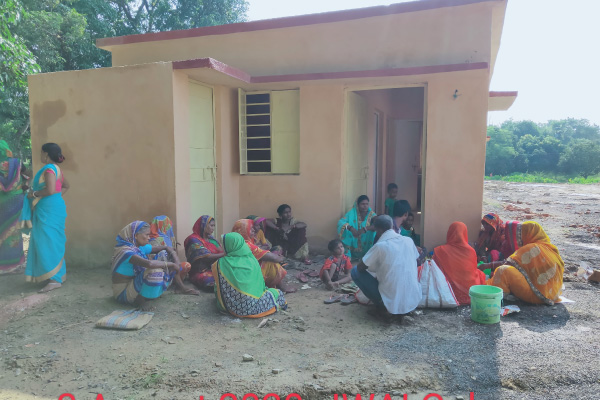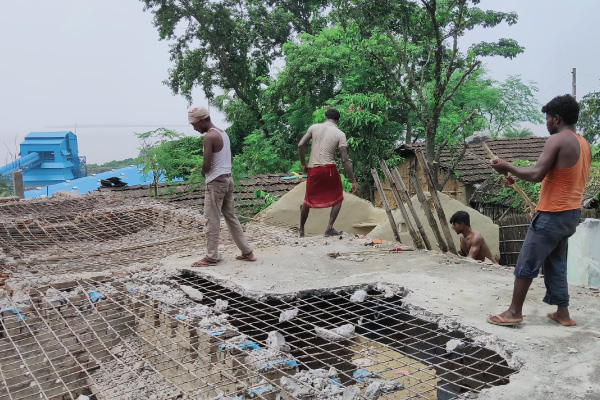Director's Life Story & Journey

Mrs. Rita Devi – A Story of Struggles, Determination, and Success
Mrs. Rita Devi was born into a humble family, where values of hard work and persever ance were deeply ingrained. In 1990, she got married and moved to her husband’s home in Lilwa Tola, located in Rampur Hardayara in the then Bihar’s Sahiganj district. Her new home was surrounded by the mighty Ganges River, making transportation a significant challenge. The only way to reach the village was by crossing the river in a boat and then traveling by bullock cart to their home.
Her husband, Mr. Ravindra Kumar Rajak, had completed his tenth-grade education at the time of their marriage. Her father-in-law, Mr. Ganesh Rajak, was a well-to-do farmer, owning vast agricultural lands that provided them with a comfortable life. However, fate had other plans, and soon, life took an unexpected turn.

The Journey of Parenthood and Initial Struggles
As time passed, Mr. Ravindra Kumar Rajak became involved with non-governmental organizations (NGOs) and started teaching rural children. Though this noble work was satisfying, the earnings were meager—only ₹200 per month. Despite financial hardships, the couple remained determined to provide a better future for their children.Her husband, Mr. Ravindra Kumar Rajak, had completed his tenth-grade education at the time of their marriage. Her father-in-law, Mr. Ganesh Rajak, was a well-to-do farmer, owning vast agricultural lands that provided them with a comfortable life. However, fate had other plans, and soon, life took an unexpected turn.


The Catastrophe – Losing Everything to the River
Her parents, Mr. Moti Rajak and Mrs. Bhushan Devi, extended their support by purchasing a small piece of land in Manghanari, Katihar district. They also helped construct a simple thatched-roof house for the family. With their children, Rita Devi and her husband started a new chapter in Manghanari, but their struggles were far from over.

Adapting to a New Life
To help sustain the family, Rita Devi herself took on responsibilities beyond household chores. She would gather firewood from nearby fields and forests to cook meals. Life was tough, but she refused to give up.


The 1997 Flood Disaster
Realizing they couldn’t survive in Manghanari, the family decided to move back to Rampur’s Bisrasiya area. Unfortunately, that region was also affected by floodwaters. Despite the hardships, they continued to live there alongside other displaced family members.
In the same year, their second son, Rishikant, was born. The family’s financial condition continued to decline. To survive, both Rita Devi and her husband started working as daily wage laborers, earning just ₹20 per day.

Facing Extreme Hardships
As a means of survival, her husband worked in other people’s fields, cultivating crops like pointed gourd (parwal) and lentils. Rita Devi also started working in fields, cutting crops for just ₹20 per day, while men earned ₹40 for the same job.
With no other options, she gathered dried cow dung from fields to use as cooking fuel. Since they had no tools or transport, she carried firewood by tying it to her sari. Even her children accompanied her, as there was no one to look after them at home.


Yet Another Flood and a Near-Tragic Incident
One terrifying day, while their eldest son was using a makeshift ladder for toilet needs, he slipped into the strong water currents. The entire family watched in horror as he was swept away by the flood. By sheer luck and quick reflexes, he was rescued—a moment Rita Devi considers as her son’s rebirth.
With the flood worsening and their home on the verge of collapsing, they decided to escape. Using a large iron vessel as a floating device, they moved to a larger boat and eventually reached Sahiganj. From there, they boarded a small ship to Manghanari, marking the end of yet another painful chapter.

From Struggles to Success
Today, she is not just a survivor but a leader. She stands as a pillar of strength, proving that with hard work, patience, and perseverance, one can rise from the most challenging situations and achieve success.

